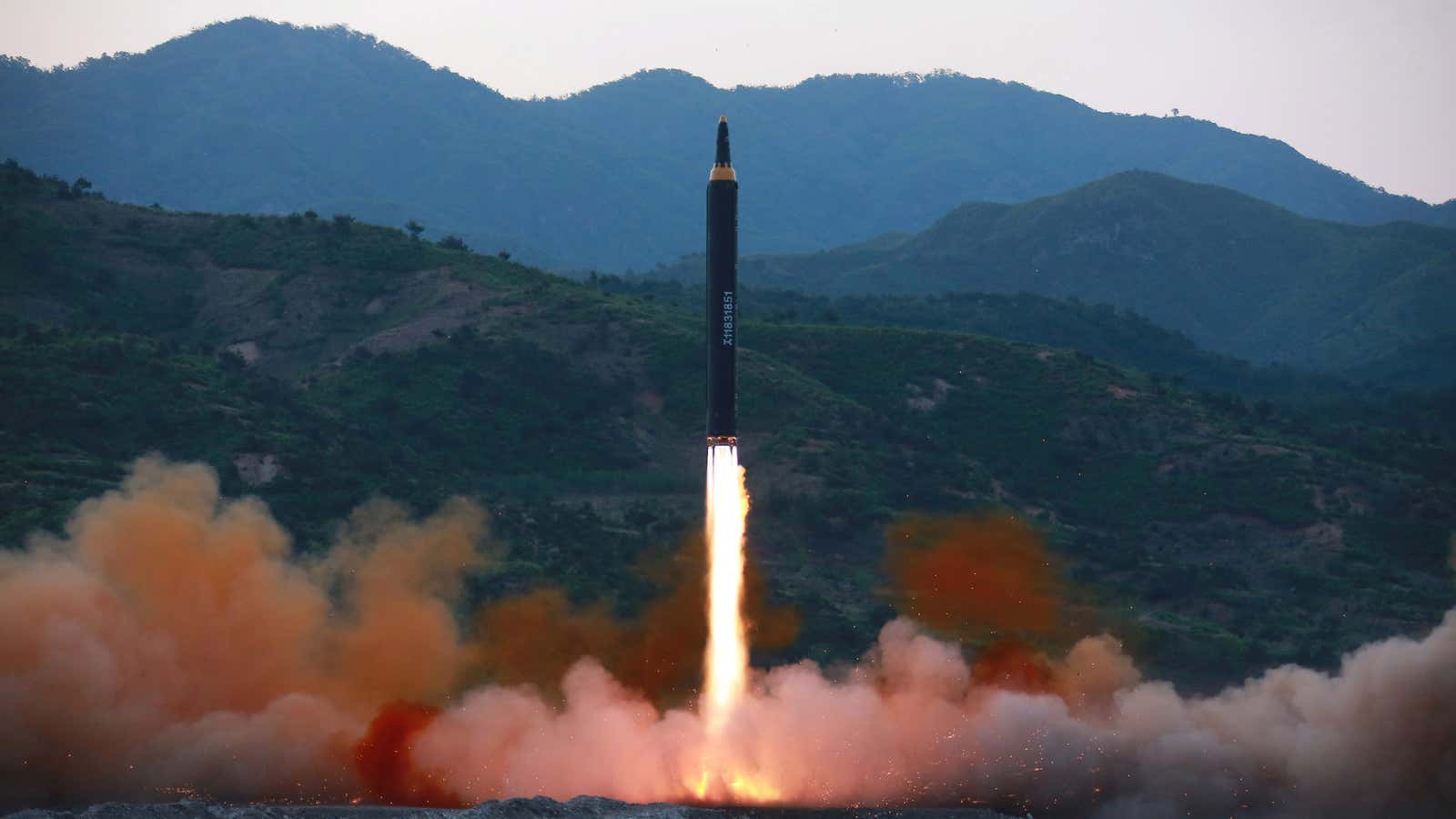North Korea expressing gratitude for the United States? American officials praising Pyongyang for being “very cooperative”?
It’s hard to imagine any of that happening today, of course, but during a blip in history in 2007, it was the case, as tense relations between the two nations seemed to be improving.
Today North Korea makes no secret that it’s working toward the ability to hit US cities with nuclear weapons. It continues to test-launch missiles, showing clear progress amid occasional failures. (It conducted its latest successful medium-range missile test this past weekend, following another one the previous Sunday.)
The current tension makes what happened a decade ago seem all the more remarkable.
The moment came not long after North Korea performed its first test of a nuclear bomb, in October 2006. In early 2007, it broadly agreed to close (paywall) its main nuclear reactor (capable to producing plutonium for nuclear bombs) in exchange for a US-led aid package worth about $400 million. In October 2007, the second stage of that deal gave a specific timeline (paywall) for disabling the plant, which was to be done by year’s end. George W. Bush, then in his second term as US president, touted the arrangement between the US and North Korea as a major foreign-policy achievement.
Indeed, the year 2007 seemed to be one of hope, at least to some (there were, of course, skeptics). Pyongyang twice thanked Washington for demonstrations of good will. The first came in September, when the US provided emergency relief supplies in response to the worst floods to hit North Korea in decades. The second followed the US Navy helping a North Korean ship repel pirates off the coast of Somalia.
But the improving mood didn’t last. In 2008, doubts increased over sufficient verification of denuclearization. Washington demanded that inspectors be given the right to visit all suspected nuclear facilities without notice. Pyongyang rejected that notion. In August it said it had stopped disabling its nuclear reactor, and it threatened to reboot plutonium production unless the US removed North Korea from a list of state sponsors of terrorism. The Bush administration did remove North Korea from the list in October in an attempt to salvage the deal, but things still went downhill. Also that year, South Korea ended its ”Sunshine Policy” of greater engagement with (and aid to) the North.
Many now believe that Pyongyang was never serious (pdf, p. 1) about ending its nuclear and missile programs, and the Trump administration is now considering whether to put North Korea back on the terrorism list.
On May 19, US defense secretary Jim Mattis warned that any military solution to the North Korea crisis would be “tragic on an unbelievable scale.” It was another indication that the Trump administration wants to exhaust alternatives before resorting to force.
Meanwhile North Korea is seen as an increasingly scary problem—and not just to military watchers. A group of market analysts, including from Citigroup and Goldman Sachs, recently warned about the risks to markets. If Pyongyang conducts a sixth nuclear-weapon test, they noted, it could prompt the US to conduct surgical strikes on military facilities. That could result in rapid escalation leading to all-out war—which in turn would likely trigger an epic refugee crisis and major disruptions to global supply chains.
While South Korea has a new president who favors engagement with Pyongyang, the tenuous optimism of 2007 seems more remote than ever.
